Hanoi beef pho is more than just a dish; it’s a cultural symbol, a culinary pride of the capital’s people, and a highlight on Vietnam’s culinary map. From street vendors to luxurious restaurants, Hanoi beef pho consistently holds its position as a national dish, conquering the hearts of countless diners both domestically and internationally. Behind each fragrant, steaming bowl of pho lies a long story of history, culture, and family secrets preserved through generations.
Embarking on a Flavor Journey of Hanoi Beef Pho
Origin and Diverse Variations
Pho, a dish originating from Hanoi in the early 20th century, was initially primarily beef pho. Over time, Hanoi beef pho has undergone many transformations, from preparation methods to ingredients, creating diversity in flavor and culinary experiences. Besides traditional beef pho, diners can explore many appealing variations such as rare beef pho (pho bo tai), well-done beef pho (pho bo chin), beef brisket pho (pho bo nam), beef flank pho (pho bo gau), pho with red wine sauce (pho sot vang), or even beef meatball pho (pho bo vien), each offering a unique nuance, satisfying every palate.
Secrets to Choosing Fresh Ingredients
To create an authentic bowl of Hanoi beef pho, ingredient selection plays an extremely important role. Pho broth, the soul of the dish, is simmered from fresh beef bones, bringing a natural, delicate, and rich sweetness. Beef also needs to be carefully selected; depending on the type of pho, chefs will use different cuts of meat such as:
- Beef bones: Prioritize fresh beef leg bones, naturally red in color, without odor, and avoid frozen bones to ensure sweetness and nutrition for the broth.
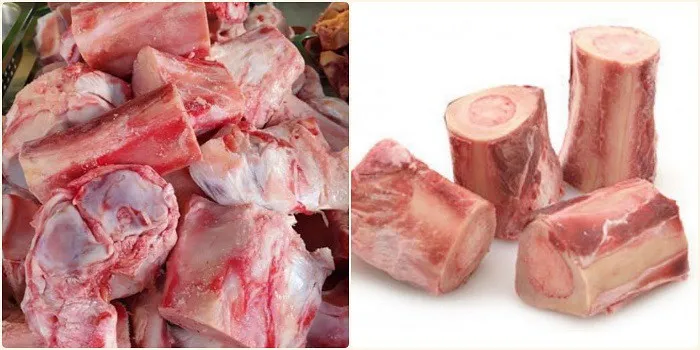
- Beef for well-done pho, red wine sauce pho, flank pho: Should choose beef shank or beef flank, especially the “flower shank” with tenderness, crispness, and rich flavor. Avoid meat that is too fatty, causing greasiness, or too lean, causing dryness.
- Beef for rare pho: Beef tenderloin is the ideal choice due to its tenderness, aroma, and low fat content; when briefly cooked, it retains its sweetness and perfect tenderness.
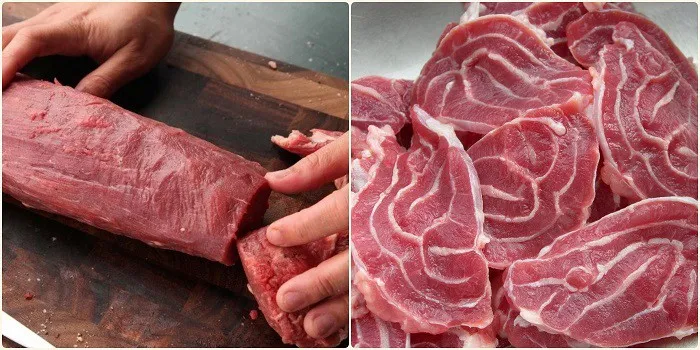
Tips for choosing fresh beef:
- Color: Fresh beef has a bright red color, beef fat is pale yellow, and tendons are white.
- Elasticity: The meat has good elasticity when pressed, is not sticky to the hand, not dry, and not slimy.
Proper Preliminary Processing of Beef and Bones
Preliminary processing of beef and bones is a crucial step to remove the characteristic odor, especially from beef bones, so that the pho broth is clear and fragrant.
For beef:
- Wash the beef thoroughly with water to remove blood and dirt.
- Pat the beef dry with a clean cloth or paper towel.
- Use crushed roasted ginger or lemon/vinegar to rub on the surface of the meat to remove odor.
- Rinse the beef thoroughly again with cold water.
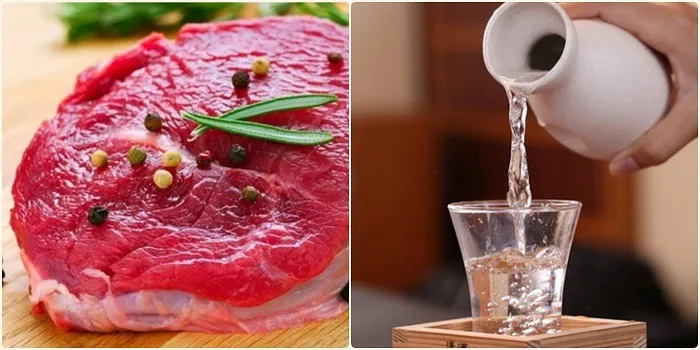
For beef bones:
- Wash the beef bones thoroughly with water.
- Soak the bones in a mixture of water, crushed ginger, salt, and lemon juice for 4-6 hours to remove odor and clean them.
- Rinse the bones thoroughly again with cold water and drain.
Authentic Hanoi Beef Pho Recipe
Ingredients:
- Beef tenderloin: 500 grams
- Beef bones: 2 kg
- Onion: 200 grams
- Coriander roots: 6 roots
- Sugarcane: 2 sections (about 10 cm each)
- Pho noodles: 500 grams
- Spices: MSG, fish sauce, salt, sugar, pepper, cooking oil, chili sauce, black sauce, dried cinnamon, star anise, cardamom, fresh ginger, shallots, coriander seeds…
- Accompanying herbs: Bean sprouts, cilantro, scallions, chili, lemon…

Instructions:
Step 1: Prepare ingredients
- Wash and pre-process beef bones as instructed above.
- Roast onions, shallots, ginger, and sugarcane until fragrant, peel, wash, and drain. Slice ginger, halve onions. Split sugarcane sections.
- Pick, wash, and soak scallions and cilantro in diluted salt water, then chop finely.
- Roast star anise, cinnamon, cardamom, and coriander seeds until fragrant, then place in a tied cheesecloth bag.

Step 2: Cook the beef pho broth
- Blanch beef bones in boiling water with ginger and rice wine to remove impurities and odor. Rinse bones thoroughly with water again.
- Place beef bones in a large pot, cover with water, add roasted onions, ginger, sugarcane, coriander roots, and spice bag.
- Bring to a boil, skim off foam continuously to keep the broth clear.
- Season with spices (seasoning powder, seasoning granules) to taste.
- Simmer bones for about 4 hours or longer for a rich and sweet broth. Remove the spice bag when the broth is fragrant.
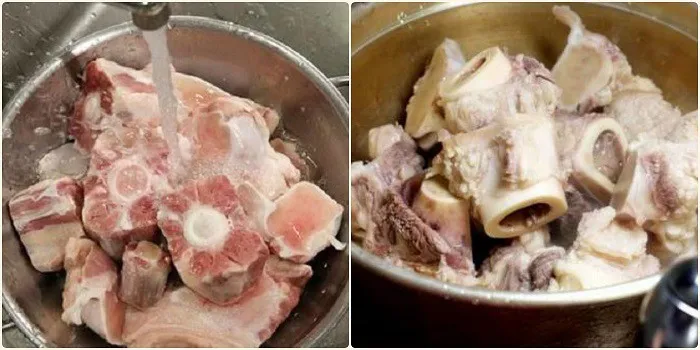
Step 3: Assemble and enjoy
- Slice beef thinly, blanch briefly in boiling water (if making rare pho).
- Blanch pho noodles in boiling water, place in a bowl, add beef and herbs.
- Ladle hot broth over.
- Enjoy Hanoi beef pho with fried breadsticks (quẩy), raw vegetables, bean sprouts, lemon, chili, chili sauce, black sauce…
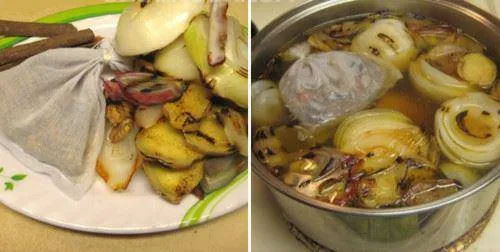
Finished product:
A successful bowl of Hanoi beef pho is a delicate harmony between the sweet, rich broth, soft, chewy pho noodles, flavorful beef, and fresh herbs. This distinctive flavor has become an indispensable part of Hanoi cuisine, captivating generations.
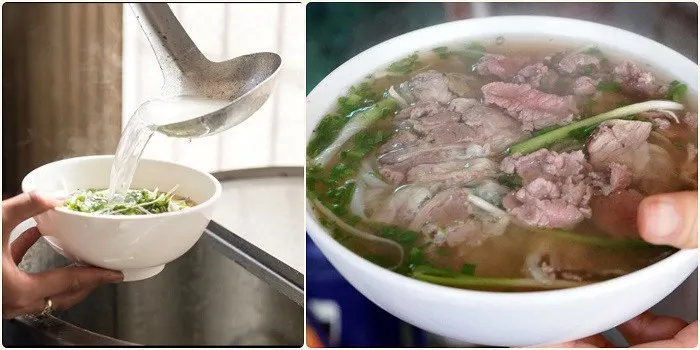
Unique Variations of Hanoi Beef Pho
1. Pho Bo Sot Vang (Pho with Red Wine Sauce)
Pho bo sot vang is a unique combination of the traditional flavor of beef pho and the rich, fragrant red wine sauce. Beef is braised until tender in a smooth, rich red wine sauce, served with soft pho noodles, creating a novel and appealing culinary experience.
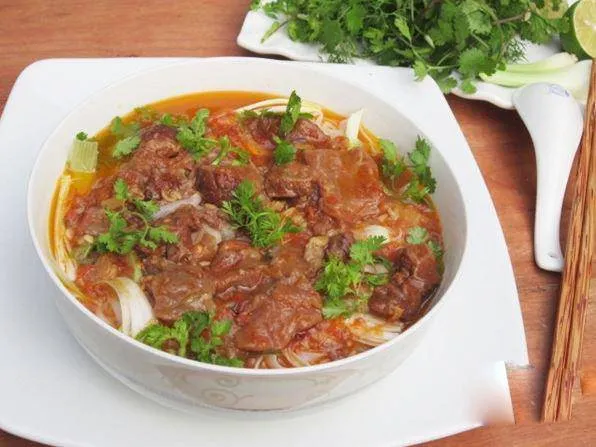
2. Pho Bo Vien (Beef Meatball Pho)
Pho bo vien is a quick and convenient option, still retaining the characteristic flavor of Hanoi beef pho. Chewy beef meatballs combined with sweet broth and soft pho noodles create an appealing and easy-to-enjoy dish.
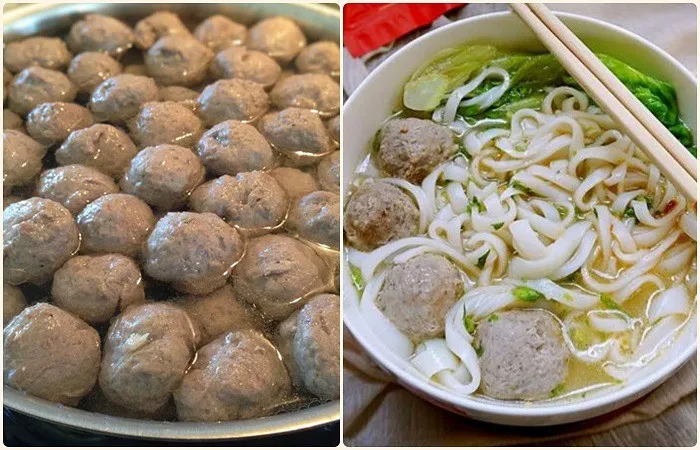
3. Southern-Style Beef Pho
Southern-style beef pho offers a different flavor compared to Hanoi beef pho. Southern beef pho broth is often cloudier and fattier, with a richer flavor of Southern spices. Despite the differences, Southern beef pho is still a beloved dish and part of Vietnamese culinary culture.
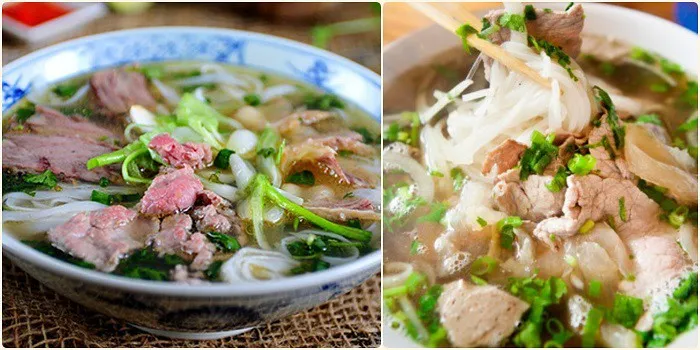
Tips for Cooking Perfect Hanoi Beef Pho
Fixing Cloudy Beef Pho Broth
Clear beef pho broth is a crucial factor in the appeal of the dish. If the broth becomes cloudy, you can apply one of the following two tips:
- Egg white: Whisk an egg white, slowly pour it into the broth, and skim off the egg white after a few minutes to clarify the broth.
- Potato: Drop a few slices of raw potato into the broth, simmer for about 30 minutes, and remove the potato to make the broth clear again.
Alt: Simple tip to clarify cloudy Hanoi beef pho broth using raw potato
Using Pho Spice Packets
If you don’t have time to simmer bones, you can use beef pho spice packets to save time. However, broth made from spice packets will not be comparable to bone-simmered broth in terms of natural sweetness and richness. To enhance flavor, you can combine using spice packets with some simmered bones.
Pho Bo and Calorie Concerns
Beef pho is a delicious and nutritious dish, but it also provides a significant amount of calories. A bowl of beef pho can contain from 400 – 500 calories, depending on the type of pho and the amount of meat.
| Type of Beef Pho | Estimated Calorie Content |
|---|---|
| Rare beef pho | 431 calories |
| Well-done beef pho | 456 calories |
| Pho with red wine sauce | 476 calories |
| Beef meatball pho | 431 calories |

To enjoy beef pho while maintaining a balanced physique, you can reduce the amount of meat, prioritize lean meat, reduce pho noodles, and increase accompanying green vegetables.
Precautions When Eating Beef Pho
Although beef pho is a popular and beloved dish, some individuals should limit or avoid eating beef pho:
- People with skin diseases.
- People with bone and joint diseases.
- People with kidney stones.
- People who have just undergone surgery.
- People with diabetes, high cholesterol, high blood pressure.
Conclusion
Hanoi beef pho is not just a familiar dish but also the essence of Vietnamese cuisine. From selecting ingredients and meticulous preliminary processing to the elaborate broth recipe, everything contributes to creating the distinctive, unforgettable flavor of Hanoi beef pho. Hopefully, with the above sharing, you can personally cook delicious, authentic bowls of beef pho for your family at home and fully experience the cultural beauty of Hanoi cuisine.